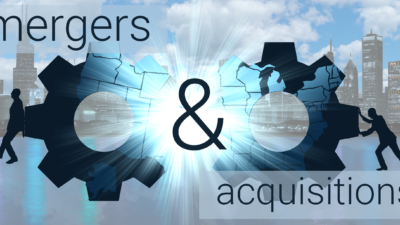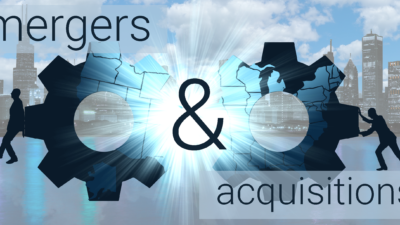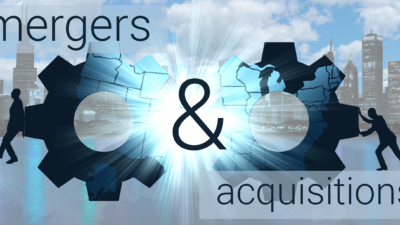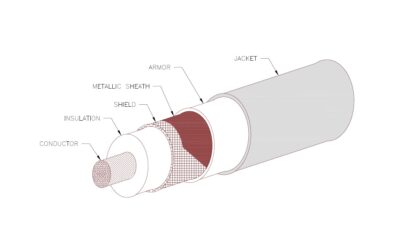Morrissey Goodale discusses AI and machine learning in the architecture and engineering spaces in this interview

In many ways, the world of artificial intelligence (AI) and machine learning (ML) feels a lot like the Wild West and the American frontier. Burgeoning promise and potential. Fortunes to be made. Rumors of riches in them thar hills. Rules, regulations, and governance being made up in real time. Ambitious adventure seekers and pioneers. Naïve prospectors. New ways of doing things. Baseless claims. Hucksters. Rich seams to be mined. Gold Rush fever. More than a little “All Hat, No Cattle” in play. (Full disclosure, I just finished watching Deadwood.)
From a strategy perspective, I’m struck by the advocacy of industry CEOs to exploit the technology. In the past, investment in new technologies was for the most part championed by CIOs and directors of IT. These technologies promised evolutionary business process improvements in quality, speed, and efficiencies that may or may not translate into improved profits. AI is different. It promises to be transformational for businesses. And CEOs are all in. They just want to know where to start.
It seems like every AE and environmental consulting firm leadership team is trying to figure out how to find and quickly mine the AE and ML gold in them thar hills. Some 40% of the attendees for our upcoming Southeast M&A and Business Symposium are already using AI in their businesses for marketing and business efficiencies, and 32% are exploring how to take advantage of the technology. Perhaps the best guide to navigate this new landscape is someone who understands not only AI and ML but AI, ML and architectural engineering (AE) – as in the AE industry.
One such firm is Thrivence (Nashville, TN), which is the management consulting subsidiary of AE industry leader Barge Design Solutions (Nashville, TN) (ENR #169). Thrivence provides strategy, leadership development, and technology—including AI and ML—solutions to Barge’s public- and private-sector clients. I sat down with Bob Higgins, CEO of Barge, and Gary McClure, senior consultant at Thrivence, for a discussion about how AI and ML are right now shaking up the AE Industry.
Morrissey Goodale: You’ve been pioneers in terms of helping your clients figure out AI and use it to generate revenues and earnings for them. Can you tell us what types of clients you’re working for in this regard and how you’ve been helping them?
Thrivence/Barge: Generative AI is still in its infancy. The interest in AI is still growing as leaders continue to hear about potential opportunities and even challenges of integrating AI in their organizations. These leaders want to get trusted insight, but they don’t know where to turn.
Where we found we can be most helpful is being that “interpreter” of artificial intelligence for the everyday business leader. We can be a bridge between the overwhelming amount of AI information currently being hyped and the organizational leaders who need to understand it at a strategic level and an operational one. Leaders are turning to us to filter out the technical jargon and media superlatives that we all tend to hear.
Morrissey Goodale: Can you provide some real-life examples?
Thrivence/Barge: Sure, here are some specific examples. Based on our experience, these are just a few of the applications that are relevant for almost every AE or environmental consulting firm. These are examples of how AI and ML can be used to improve enterprise-wide performance and better serve clients and improve services.
-
Worker acquisition: An engineering firm was struggling to attract quality candidates for key roles. AI was used to optimize job postings aimed at particular experiences desired. AI also assisted in developing content to authentically tell the firm’s story as well as propel an internal referral program. Efforts have doubled traffic to postings and dramatically increased applications.
-
Enhanced coding and workflow: An engineer applied AI to aid in automating data analytics. He built prompts for extracting data from images, building programming code, and highlighting risk in contract reviews.
-
Reduced costs: We generated cost savings using AI/ML/image recognition to build software that reduced man-hours for a client’s asset management program.
-
Improved sales: We worked with an AE firm to reimagine how they positioned themselves in the marketplace. We helped them use AI and image-recognition AI tools to create a marketing and communications plan for a major project they were leveraging with other clients. The plan included a user generated content (UGC) strategy, a marketing strategy, and a social media campaign… all from a photo of the project.
Morrissey Goodale: What’s the headline application of AE and ML in the AE industry?
Thrivence/Barge: Applying AI and ML in AE firms to facilitate the shift from hourly rate billing to a value-based billing model has been one of the primary learning areas. AI has the potential to significantly boost productivity, which allows businesses to more efficiently offer exceptional value to clients. Therefore, an hourly rate system is not economically viable. Instead, how can firms estimate the overall value of work provided?
Morrissey Goodale: You’re also becoming an AI thought leader and educator with your recent partnership with Vanderbilt University. Tell us more about that collaboration. Who are you looking to educate with it and what are you looking to bring to them?
Thrivence/Barge: This is the first technology in our careers that can do two major things AE industry CEOs have needed for a long time. First, give us more time in our day, and second help us capture value-billing opportunities and move away from the hourly-rate billing structure we have lived by in our entire careers.
Our partnership with Vanderbilt will quickly scale our ability to train our people to use these AI tools, like machine learning, robotics process automation, and image recognition. Vanderbilt is a global leader in the future of learning and generative AI. They will also help us bring AI along as “augmented intelligence” and an exoskeleton for our brain. Finally, we will partner with them and our clients on research opportunities that will improve our ability to scale AI in infrastructure design more quickly to meet the current demands in our industry.
Morrissey Goodale: How do you see AI playing out in the AE and environmental consulting industry? What are the big benefits for CEOs and executive teams? What opportunities does AI present for design and environmental firms?
Thrivence/Barge: We’re hearing some pretty creative and thoughtful ways AE firms are applying AI. But the benefits tend to be associated with the standard areas of operational efficiency, optimizing time, and reducing errors and expenses. It’s also being used to decrease risk as well as enhance business service teams (productivity).
We outlined some specific use cases in our recent video masterclass on AI for AE firms. For example, design optimization where algorithms can create numerous design variations by altering parameters such as materials cost and spatial requirements. This helps architects and engineers quickly explore a wide range of design possibilities.
No doubt we’ll continue to see new ideas evolve as firms explore ways to implement AI. Our goal is to find ways to best share those successes (and even failures) with other firms so we can learn from each other.
Morrissey Goodale: Do you see AI primarily being used by the largest firms in the industry?
Thrivence/Barge: Larger firms likely have more resources than smaller ones to dedicate to AI implementation. So, we see their use cases are grander in scale and, perhaps, impact. But another interesting perspective on AI is that it’s an effective “field leveler.” By that we mean small firms can integrate AI and generate proportionally similar positive impact as much larger organizations. It doesn’t necessarily require massive capital and resource outlays for AI to make a meaningful contribution to a firm’s operations. In short, we are convinced that AI is applicable, as we demonstrate in our course, to every CEO and their team in the industry.
Morrissey Goodale: When you’re advising clients where to prioritize their efforts or decision-making around AI, what are you telling them?
Thrivence/Barge: Prioritization is highly situational. That’s why we recommend CEOs explore potential opportunities to apply AI based on their specific needs. We don’t believe it can be a one-size-fits-all approach. What’s a “golden ticket” for one firm may not be as relevant for others.
So, we advise first dedicating time on the front-end working with employees at all levels of the firm and across functional areas. They’re going to generate the best ideas for where to start with AI. Give them the skills and resources to embrace AI in their areas of responsibility. Engaging employees has a positive amplifying effect, from generating internal excitement and buy-in to uncovering the best ways to pilot AI. If leaders think employees first, then technology, AI adoption happens quicker and with less drama.
We’ve found that it’s optimal that CEOs pursue AI use cases that address customer needs or internal enterprise issues. Integrating AI in your organization is not about chasing the technology, for it is ever-changing and too fluid to be “managed.” Focus first on what brings value to the organization and those you serve.
Morrissey Goodale: Is there a simple step-by-step process that AE CEOs and executive teams can follow to begin to harness the power of AI?
Thrivence/Barge: Yes. We simplify the process by segmenting AI implementation into three phases: preparation, pilots, and post. We have a practical (and free!) AI implementation guide (available here) for AE and environmental consulting firm leaders. The guide highlights critical success factors such as equipping the leadership team with AI fundamentals, tapping into teammates at all levels of the firm, building diverse cross-functional teams, crafting AI guidelines or governance, and measuring everything as you learn.
Morrissey Goodale: As I mentioned up top, my read is that one of the reasons that AI (and ML) will be so transformative for the AE industry is that unlike prior technologies, it is being evangelized by CEOs and not exclusively by CIOs or IT directors. What’s the one piece of advice you’d give a CEO who is beginning to explore AI and its potential?
Thrivence/Barge: While research and planning are prudent, we encourage leaders to just jump in and try AI. Implement it with one or two “low-risk” use cases. Continually assess the process and react to it. Measure everything along the way, too. In other words, learn by doing. It’s like taking a leap into a swimming pool. Sure, it’s a shock when you hit the water, but you adapt quickly and keep your head above water.
Morrissey Goodale: Thank you, Gary and Bob. For our readers, should you wish to know more about Thrivence and how they can assist you on your AI journey, Gary will be joining us in Miami this March for our Southeast M&A and Business Symposium. Indeed, it’s a busy spring calendar of AI and Innovation for the industry—see below.



